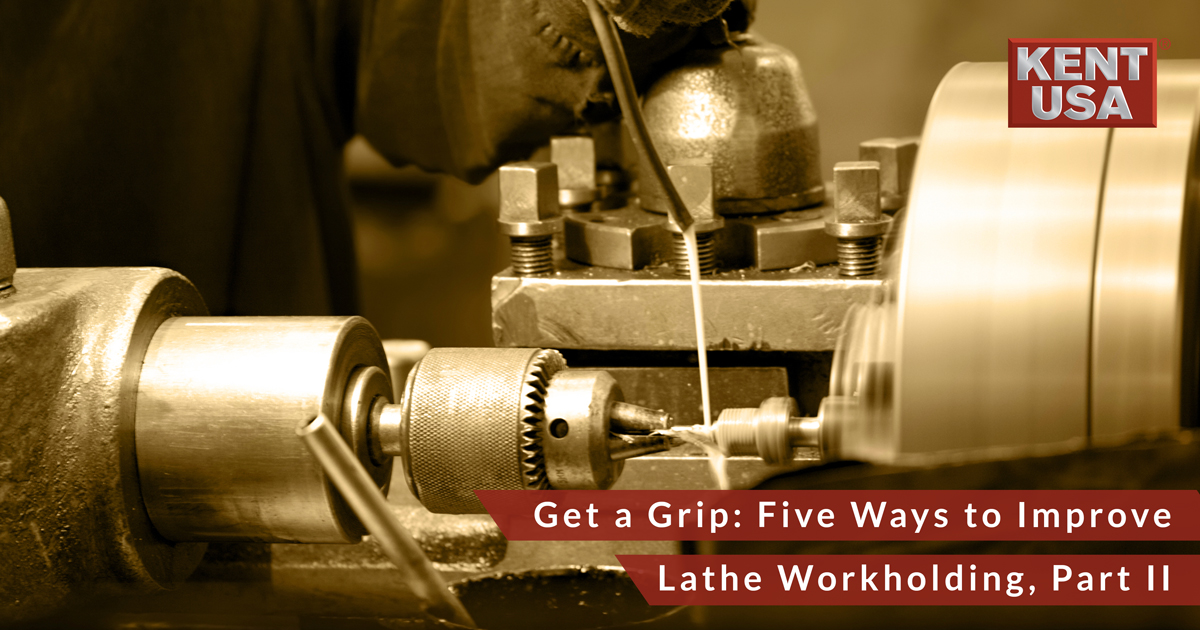Get a Grip: Five Ways to Improve Lathe Workholding, Part II
As mentioned in the previous blog post, 3-jaw chucks rank among the most important lathe accessories for anyone who turns parts for a living. In fact, even calling them accessories is a bit of a misnomer, because without a chuck, nothing gets produced. Making them work as intended for your application, however, requires you to perform a reasonable amount of preventive maintenance (covered in the last post) along with following a few best practices like these:
JAWS!
With the exception of the Kent USA’s CTL-618EVS toolroom lathe (which is equipped with a 5C collet nose) all of our manual precision lathes come standard with a 3-jaw chuck and a set of two-step serrated hard jaws. This is sufficient (preferred, actually) for bar work and most first operations, but it might be a good idea to invest some claw jaws and single-step hard jaws as well, depending on your requirements. Be sure to order additional jaw carriers to speed setups.
Best Boring
For secondary operations where you need to grip a turned surface, you’ll also need some machinable soft jaws, along with some way to tension them for boring. Clamping on a small chunk of leftover material will do in most cases, but a more elegant and efficient approach is to use an adjustable jaw boring ring like the one shown here: http://www.penntoolco.com/jaw-boring-ring/ This company also offers a nifty set of “ANTI-BACKLASH” rings, which make it convenient to bore and then re-bore jaws in 1/16-inch increments. For best results, be sure to apply pressure comparable to (or maybe a smidge more) than that used to turn the workpiece, bore them at roughly the same RPM, and for the best grip, bore them a couple thou’ undersize.
Safety First
This final section has little to do with workholding, and while I’m sure you’ve been hearing these and other safety tips since your first day in the shop, they bear repeating:
- Never walk away from the lathe with the chuck key still in the chuck. Never wear loose clothing, rings, or long hair around a lathe or other machine tool. Always keep the floor around the lathe free of oil and cutting fluids, and always wear safety glasses.
- If you suspect a part may have shifted slightly during a turning operation, stop the machine immediately—if you don’t, chances are excellent that the workpiece will work its way free and tumble to the floor, or worse.
- Don’t remove chips form the work area while the spindle is turning, and especially don’t use your hands (big ouch potential here).
- Use RPM appropriate to the work. For example, Kent USA’s TRL-1340V 13-inch geared head lathe offers high-range speeds up to 3000 RPM, but that doesn’t mean you should spin a 10-inch diameter chunk of steel that fast.
Depending on the exact machine model, most of Kent USA’s manual lathes come equipped with safety features such as splash guards, full-length foot brakes, adjustable overload feed clutches and quick-reversal mechanisms, but safe operation begins with the person standing in front of the lathe—namely, you. So stay safe, be accurate, and don’t hesitate to call us if you have questions on this or any other blog topic.
Share this article:


